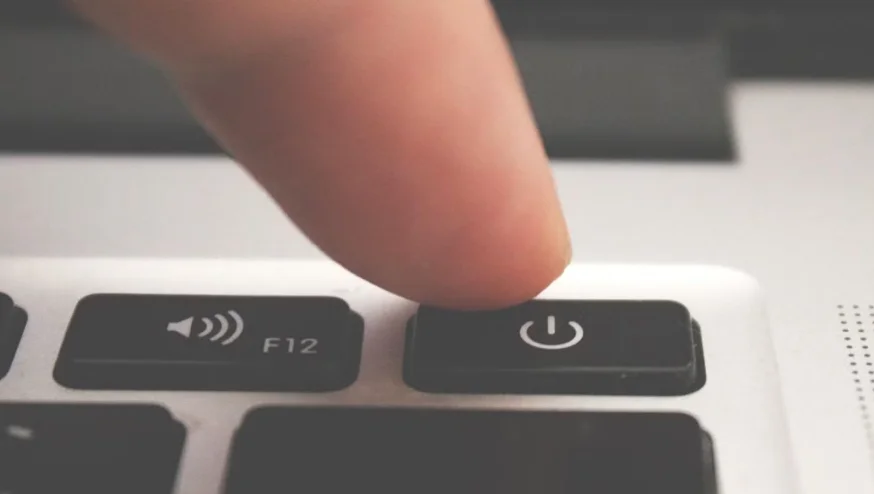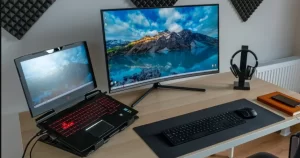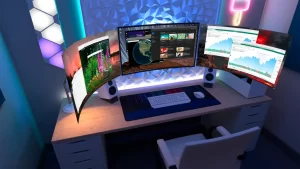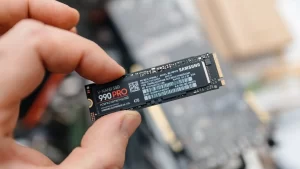When a computer powers on, only to shut down within seconds or minutes, it can be both alarming and frustrating. This issue often feels more serious than a software crash—and in many cases, it is.
A system that shuts down immediately after startup usually signals a problem at the hardware or firmware level, though software-related causes shouldn’t be ruled out completely.
Common Causes at a Glance
Here’s a high-level overview of the most likely reasons a computer shuts down right after startup:
| Category | Possible Cause | Typical Symptoms |
|---|---|---|
| Power Supply | Failing PSU, loose cables | Fans spin briefly, then everything stops |
| Overheating | CPU/GPU gets too hot too fast | Sudden shutdown, often without warning |
| Faulty RAM | Corrupt memory or poor seating | Inconsistent startup success |
| Motherboard Issues | Damaged capacitors, short circuits | No display or shutdown within seconds |
| BIOS/UEFI Settings | Voltage/frequency misconfiguration | Startup power cut, especially after hardware changes |
| Software/Driver Faults | Startup loops or crash after booting into OS | Windows or Linux loads briefly, then restarts |
| Peripheral Conflicts | Faulty USB device or external component | Shutdown triggered during POST or device initialization |
1. Check the Power Supply (PSU)
One of the first things to check is your power supply. A weak, dying, or incompatible PSU can’t provide enough voltage or current to keep your system running.
Signs of PSU Failure:
- Computer shuts down right after fans or lights turn on
- No display before shutdown
- System runs on another PSU
What to Do:
- Re-seat all power cables (to motherboard and GPU).
- Remove non-essential components and try booting with just CPU, RAM, and motherboard.
- If available, test with a different PSU of equal or higher wattage.
Tip: For laptops, try removing the battery (if removable) and booting on AC power only.
2. Inspect CPU Cooling and Overheating
A CPU that overheats even briefly during boot will cause an immediate shutdown to protect the hardware.
Things to Check:
- Is the CPU fan spinning?
- Did you recently apply new thermal paste or reinstall the cooler?
- Is the heatsink properly secured?
How to Fix:
- Reseat the CPU cooler and ensure firm contact.
- Reapply high-quality thermal paste if it’s been over a year.
- Clean any dust from heatsinks, fans, and vents.
Modern CPUs have a thermal shutdown threshold. If the cooling system fails, the system can power off within seconds.
3. Test RAM Modules
Faulty or loosely seated RAM can prevent proper booting and cause random shutdowns.
Steps to Diagnose RAM:
- Power off the system completely.
- Reseat the RAM sticks or try booting with one stick at a time.
- If you have multiple slots, test each stick in different slots.
Optional: Run MemTest86 from a bootable USB to test for memory errors once the system stays on long enough.
4. Check the Motherboard and Components
The motherboard acts as the system’s nerve center. Even minor issues—like a shorted pin or blown capacitor—can cause instant shutdowns.
Visual Inspection:
- Look for swollen or leaking capacitors.
- Check for burn marks or discolored areas.
- Smell for signs of burning electronics.
Other Checks:
- Disconnect all drives and peripherals.
- Try a barebones boot: motherboard, CPU, RAM, and PSU only.
- Listen for beeps (if your board has a speaker)—consult the manual for error code meanings.
5. Reset BIOS or UEFI
Improper BIOS/UEFI settings can prevent successful booting, especially after hardware upgrades.
How to Reset:
- Turn off the computer and unplug it.
- Remove the CMOS battery for 1–2 minutes.
- Reinstall it and power on.
Alternative: Use the “Clear CMOS” jumper on your motherboard (refer to manual).
This can undo changes like CPU overclocking or incompatible voltage/frequency settings.
6. Watch for Software or OS Triggers
If the system powers on and begins to load the OS (e.g., Windows logo appears), then shuts down, software or drivers might be to blame.
Steps to Investigate:
- Try booting into Safe Mode (press F8 or Shift + F8 repeatedly at boot, depending on OS).
- Use a bootable USB with a recovery tool (like Windows Recovery or Linux live USB).
- Check if shutdown happens before or after reaching the OS.
What This Tells You:
- If the system stays on in Safe Mode, a driver or startup service is likely responsible.
- If it crashes regardless, you’re more likely dealing with hardware.
7. Eliminate External Devices
Some rare shutdowns are triggered by USB or peripheral conflicts.
Steps to Test:
- Disconnect all non-essential devices: USB drives, hubs, printers, etc.
- Boot with only keyboard and mouse connected.
Sometimes a defective USB drive or shorted port can cause voltage drops or miscommunication during POST (Power-On Self-Test), triggering shutdowns.
8. Use a Diagnostic Table
To summarize:
| Symptom | Most Likely Cause | Recommended Check |
|---|---|---|
| Shuts down in <5 seconds | PSU or CPU overheating | Test PSU; check CPU fan and thermal paste |
| Shuts down after logo | Driver or OS crash | Boot into Safe Mode or Recovery Environment |
| Random shutdown with fan spinning | RAM or overheating | Reseat RAM; monitor temperatures |
| Shuts down when peripherals connected | USB device fault | Boot without USB devices |
| Sudden shutoff after BIOS changes | BIOS misconfig or overclock | Reset BIOS/UEFI settings |
What to Do If You Can’t Identify the Problem
If your computer consistently shuts down right after startup despite trying all the above steps, you may be dealing with a failed motherboard or CPU. These components typically require professional diagnostics or replacement.
Options:
- Take the system to a qualified technician.
- Use a hardware diagnostic service provided by your system manufacturer.
- If under warranty, initiate an RMA (Return Merchandise Authorization) for key parts.
A computer that shuts down immediately after starting up often points to deeper hardware-level issues, but the exact cause can vary from a simple misconfiguration to a failing power supply or overheating CPU. By isolating each component—starting with power and cooling—you can often narrow down the culprit without needing special tools.
Keep a methodical approach. Rule out one component at a time. If the problem lies in software, Safe Mode or recovery tools can help. But if it’s hardware, knowing what’s failing can save you time, money, and data loss in the long run.



